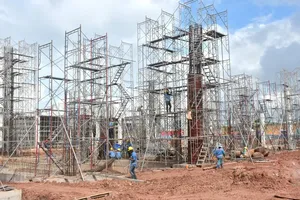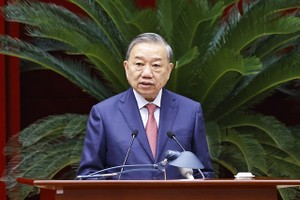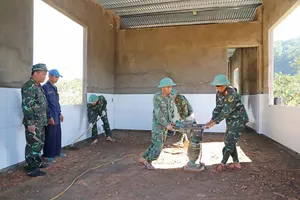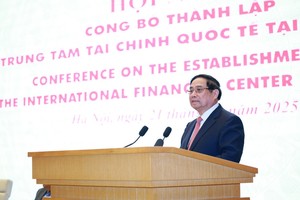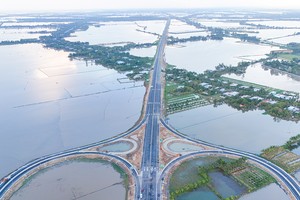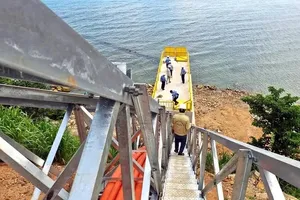
First, NA Deputy Phan Duc Hieu voiced his support to the North-South high-speed railway project before commenting that despite the lack of a feasibility study, it is essential to identify the intended purpose, which will subsequently inform design and construction parameters, including maximum velocity, load-bearing capacity, station placement, and projected investment capital. The remaining elements warrant meticulous evaluation during the feasibility study phase.
He then mentioned the main purpose of this railway, primarily emphasizing passenger transport while accommodating specific, suitable cargo operations. It is precisely this dual-purpose functionality that prompted the Government to propose a 22.5-ton axle load design specification.
When combining passenger and freight services, it is necessary to carefully evaluate which cargo types are suitable, competitive advantages (transportation costs), and comparative appeal against alternative freight transport modes and methods. It's worth noting that the existing national railway system will also undergo upgrades to prioritize freight transportation.
He further explained that while the design speed capacity is 350km/h, operational speeds will vary. For instance, passenger services might maintain an average speed of 320km/h. Operational velocities can incorporate various combinations - certain segments might operate at 250km/h to optimize efficiency while accommodating freight transport.
However, the crucial element in approving this initiative is determining system design specifications that maximize operational flexibility without necessitating subsequent "upgrades" or major modifications whenever operational adjustments are required.
Discussing the concern over limited state budget that might lead to huge loans, Deputy Phan Duc Hieu shared that the government and the National Assembly's Economic Committee have analyzed the financial viability of the high-speed railway project.
The key challenge lies in balancing investment with other national priorities and ensuring timely completion. Project delays can significantly impact efficiency. Careful planning and maximum domestic enterprise involvement are crucial for successful implementation.
There is also railway maintenance matters, which are expected to reach VND25 trillion (US$984.8 million) per year, along with additional costs of billions of USD for equipment procurement and replacement in the 2040-2060 period.
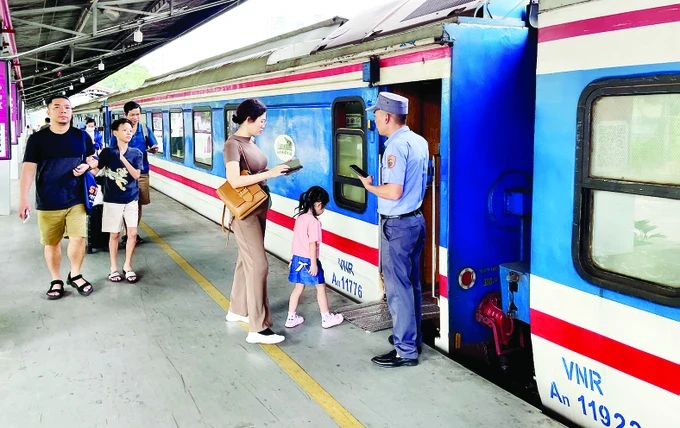
Deputy Phan Duc Hieu said that this indeed requires meticulous and precise calculations. The more accurate forecasts, the better it is to comprehend the economic equation: cost-benefit analysis for this project. Vietnam must enhance domestic enterprises' capabilities, participation opportunities, and eventual technological mastery to both optimize costs and maintain operational autonomy throughout the facility's lifecycle.
As to the appropriateness of 23 proposed station locations, he commented that this is quite logical. He added that station positioning and functionality indeed require careful consideration beyond provincial interests, including the space requirements and connectivity for freight stations, the land allocation feasibility and optimal passenger accessibility for passenger stations.
More importantly, with the TOD (Transit Oriented Development) orientation - a model integrating transportation hubs with population centers and urban development - station planning involves thorough research and consideration regarding urbanization potential and the ability to mobilize capital from surrounding land.
Finally, NA Deputy Phan Duc Hieu stressed long-term socio-economic benefits that this project brings to the whole nation excluding the financial aspect. Besides boosting socio-economic activities, the project is forecast to help population distribution and urbanization in the localities that the line passes through in particular and across the country in general.
This represents the nation's largest project to date, without precedent or extensive experience, potentially presenting unforeseen challenges. The greatest one lies in ensuring construction completion according to the Government's proposed timeline. Therefore, while meeting deadlines is crucial, it should not ignore thorough preparation in critical areas.
Project preparation is particularly vital - the more thorough and cautious, the better. Once initiated, completion is imperative. Timely project completion is not just an expectation but the aspiration of constituents and citizens. Successfully implementing the North-South high-speed railway project means the Government and relevant agencies, localities, enterprises have to overcome numerous difficulties and challenges ahead.






